#Kyu-Ryu-Tou
Text
The weird and wonderful history of Kowloon as a digital interactive space - Part I

The Kowloon Walled City was one of the most emblematic locations in Hong Kong due to its irregular, fast-paced and largely ungoverned growth within a minute parcel of land. During the occupation of Hong Kong Island by the British in the mid 18th century, the Qing authorities surrounded the area with walls, turning it into a strategic position from where to closely inspect the foreign nation's covert activities. Almost a century later, during World War II, the area was seized by the Japanese, who tore down the walls and repurposed the stone for the construction of a nearby airport.
After the war, China would eventually regain possession of the city, though the disinterest of local authorities in addressing its increasing social disturbances placed it in a downward path to a state of utter degradation. By the 1970s, Kowloon had become the epicentre of Hong Kong's criminal underworld, dominated by a handful of its most vicious Triads.
Towards the last years of its existence, the ancient settlement was as a precarious heap of concrete, sheltering nearly half a million people within less than seven acres of land. Cultural and political changes in China made it increasingly difficult for this urban anomaly to remain unaddressed. In the late 1980s, an action plan was put together aiming to relocate its inhabitants and reconvert the real estate into an inner-city park. Stories about residents refusing to leave their unsafe and unsanitary homes were featured prominently in newspapers, baffling readers all over the world.
Once the single most densely populated area in the world, this enclave was an architectural aberration whose disconcerting aesthetic influenced numerous works of art in different fields of creation; including a small yet consequential number of video games that briefly reference or prominently feature this abominably transfixing space.
九龍島 (Kyu-Ryu-Tou) - Starcraft - 1986

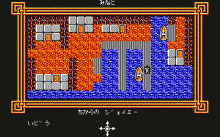
The year is 2025. An arms dealer escalates the tensions between East and West by developing a genetic weapon in a secret base at Kowloon Island. The United Nations react by sending in their best man, Jamie Starr. Unrelated to the Walled City itself, the first game to be located in the Kowloon peninsula - and indeed include the name as a part of its title - is this obscure turn-based RPG, Kyu-Ryu-Tou for the NEC PC88 and FM-77 machines.
The game is a sequel to Shangai, released the year before, featuring the same protagonist. Starcraft would also go on to produce a third instalment in 1987 named TO.KY.O. Clearly there wasn't much regard here from the developers part for geographic accuracy, as Kowloon is depicted here as being an island. While Hong Kong's southern territory is composed of an actual island, all the different areas named Kowloon are located in the mainland.
Riot City - Westone - 1991
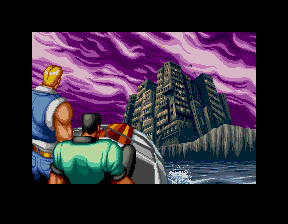

One of the most shameless specimens among a relatively long list of Final Fight clones, Riot City contains subtle references to Kowloon, though never referring to it by name. Two narcotics detectives are assigned with the mission of dismantling a cartel running a crime-ridden located in fictional Riot Island. This recurring yet geographically nonsensical notion of Kowloon as an island comes up here, yet again.
The final moment of the introduction sequence for this minor Sega arcade success shows both protagonists approaching a tight cluster of buildings whose source inspiration is quite unmistakable. Because Westone maintained ownership of most of this production's intellectual property, a later port to the PC Engine entitled Riot Zone was made possible with the help of Hudson soft.
Kowloon's Gate - Zeque - 1997
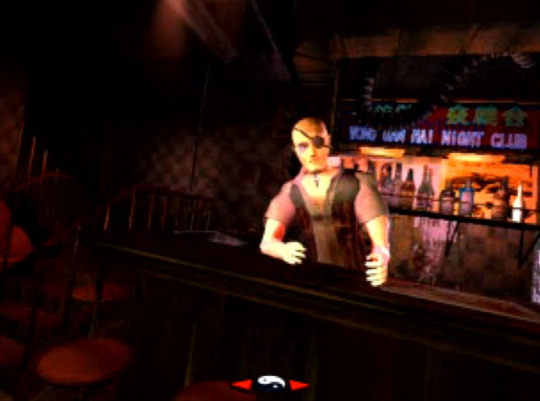
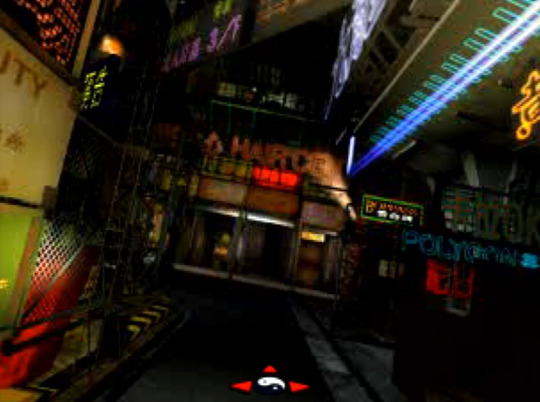
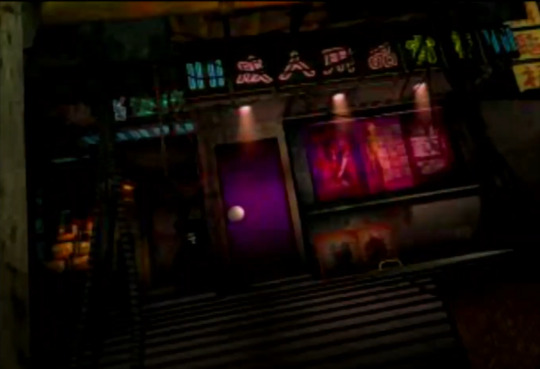
Reviving the Walled City through the lens of cybermystic surrealism, Kowloon's Gate is a dense, daunting adventure masterfully capturing the slum's dark and narrow recesses. This 1997 Japanese Playstation exclusive spans across four discs of unparalleled full motion 3D CGI spectacle, alternating with real-time 3D dungeons brimming with outlandish characters and concepts deeply inspired by Chinese history, geography and cultural traditions.
Ironically, Zeque managed to embed the theme of Feng-Shui, the ancient geomantic art seeking harmony between the individual and their surrounding space, into a story set in the world's most historically untidy district.
SaGa Frontier - Square - 1997
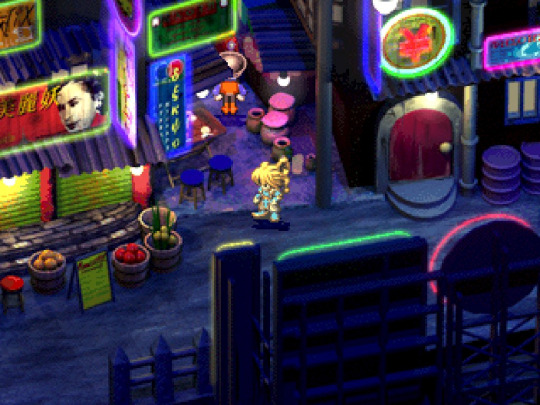
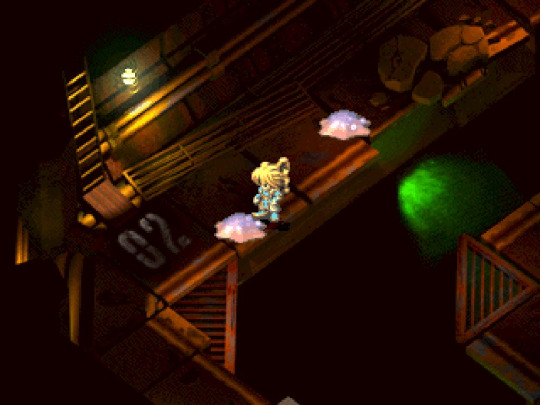
SaGa Frontier takes place in a solar system named The Regions, composed of multiple inhabited worlds for the player to explore, each with its different degree of civilizational development and culture. One of these planets goes by the suggestive name Kūron. Its pervasive neon light signs, food stalls, makeshift cabins and rooftop scaffolding instantly evoke the memory of China’s so-called city of darkness.
Shadow Hearts - Sacnoth - 2001

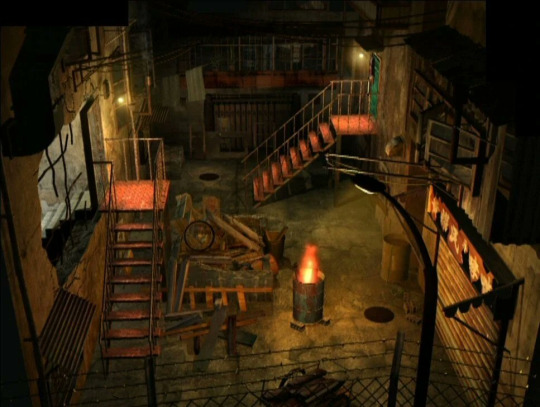
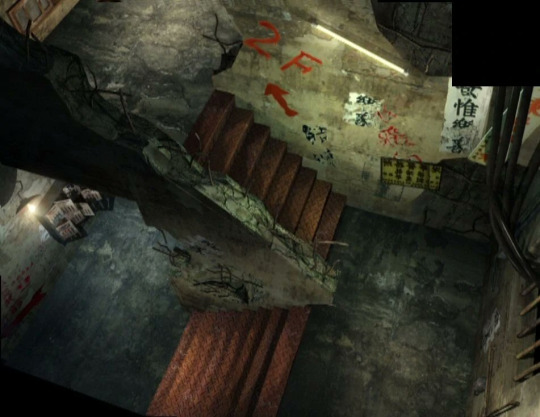
Shortly after the release of Koudelka, Sacnoth's initiated the development of Shadow Hearts, the first episode from a cult RPG trilogy exclusively designed for the Playstation 2. In good Japanese fashion, the game proposes an anachronistic yet visually suggestive depiction of Kowloon, portraying its architectural style and degree of decay as it existed in the late twentieth century, despite the fact that the game's events take place during the nineteen twenties.
Just as noteworthy is the almost complete absence of any inhabitants, which inadvertently make this portrayal of the quarter eerily reminiscent of the state in which it was found circa 1993 or 1994, as local authorities brought the long, arduous eviction project to a close.
Shenmue II - SEGA AM2 - 2001


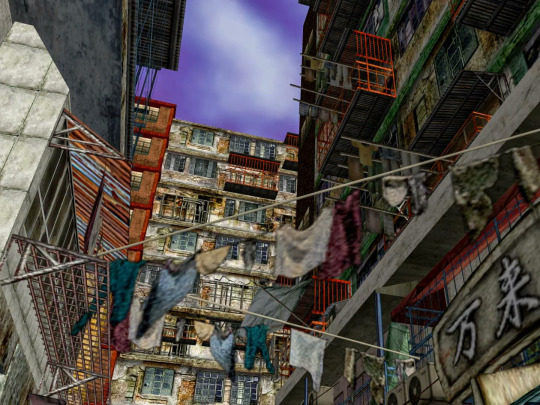
Shenmue II exhibits the most complete and period-accurate video game representation of Kowloon to date. While more recent games featuring this area may represent a number of its aspects with the aid of improved visual fidelity, none features it with such depth as this masterpiece of masterpieces. More than mere background decoration, Kowloon exists in the Shenmue series as a crucial, climacteric element of its modern epic narrative.
It is a well known fact that Yu Suzuki and his team conducted extensive research of the region so as to achieve a result that impresses even to this day. It must be noted, however, that they have similarly taken a fair share of creative liberty when converting the area to best align with the themes they wished to explore. Further reading is required for a more complete context in this regard, namely how this area ties with an early Dreamcast tech demo design which fans lovingly named Tower of Babel.
Ostensively, technical limitations did curtail the degree of precision in which the surrounding area could be replicated. The aerial view from the cutscene in which Ryo Hazuki arrives on location places Kowloon at an imaginary degree of elevation over surrounding vegetation. In the year of 1987, during which the game is set, the actual enclave stood perfectly levelled with a myriad of other modern buildings, undoubtedly more than could be reproduced under the circumstances.
These trifling considerations aside, Shenmue II entirely succeeds in capturing the vibrant life and mesmerizing beauty of the destitute and decayed urban agglomeration, in a way that it was deemed entirely impossible at the time of its release.
For reasons entirely related to per post content limitations imposed by Tumblr, this article will be continued in PART II.
#china#hong kong#kowloon#kowloon walled city#videogames#Kyu-Ryu-Tou#riot city#saga frontier#kowloon's gate#shenmue ii
379 notes
·
View notes
Text
Chi-sung est condamné à 7 ans de prison pour tentative de meurtre. Le chef de son clan lui avait ordonné d’éliminer le patron de la mafia adverse. Mais il comprend que son boss l’a trahi quand ses parents sont assassinés. Il s’échappe de prison pour se venger et retrouve son meilleur ami, qui va devoir choisir entre son amitié et sa loyauté envers son clan…
Origine du film : Corée du Sud
Réalisateur : Jang Jin
Scénariste : Jang Jin
Acteurs : Jung Jae-young, Jung Joon-ho, Ryu Seung-ryong, Min Ji-hwan, Shin Goo, Lee Yong-yi, Kim Dong-ju, Yoon Yoo-sun, Joo Jin-mo, Jang Young-nam, Jung Gyu-soo, Kim Kyu-chul, Lee Han-wi
Musique : Park Geun-tae
Genre : Comédie, Drame, Policier
Durée : 2 heures et 6 minutes
Date de sortie : 22 avril 2009 (France)
Année de production : 2006
Sociétés de production : K&J Entertainment
Distribué par : CJ Entertainment
Titre original : Georukhan Gyebo / 거룩한 계보
Notre note : ★★☆☆☆
“Georukhan Gyebo” ou “Righteous Ties” pour la distribution internationale, et “La Lignée Sacrée” pour la distribution française, est une comédie dramatique sud-coréenne datant de 2006, écrite et réalisée par Jang Jin, à qui l’on doit également “The Man on High Heels” (2014). Les acteurs principaux sont Jung Jae-young, qu’on a pu voir dans “Countdown” (2011), Jung Joon-ho, qu’on a pu voir dans “Operation Chromite” (2016), Ryu Seung-ryong, qu’on a pu voir dans “Psychokinesis” (2018), Jang Young-nam, qu’on a pu voir dans “The Classified File” (2015), Joo Jin-Mo, qu’on a pu voir dans “Kundo: Age of the Rampant” (2014), Lee Han-wi, qu’on a pu voir dans “Secteur 7” (2011), et Shin Goo, qu’on a pu voir dans “Bluebeard” (2017).
L’histoire proposée par “Righteous Ties” nous invite à suivre Chi-sung (Jung Jae-young), un gangster qui se retrouve en prison, incarcéré pour sept ans, après avoir poignardé, sur l’ordre de son patron, Kim Young-hee (Min Ji-hwan), un rival, qu ‘il laisse paralysé, et empli d’un désir de vengeance. Bien que durant son procès Chi-sung n’incrimine pas son patron, ce dernier le trahit et essaie de le faire tuer, bien que la tentative soit infructueuse. Parallèlement, sa dernière victime fait exécuter ses parents qui vivaient très modestement. Chi-sung va tout tenter pour s’évader et retrouver tous ses adversaires afin de se venger.
“Righteous Ties” est précisément le type de film que je n’aime pas. L’histoire est plaisante, mais le développement est calamiteux. Jang Jin, le scénariste-réalisateur, n’arrive pas à se positionner clairement, et finalement, à aucun moment on arrive à savoir si on regarde un film d’action, une comédie, un drame. Ça part un petit peu dans tous les sens, sans jamais s’installer distinctement dans un genre. Du coup, cela apparaît comme brouillon, et on n’arrive pas à s’engager pleinement dans l’intrigue.
En outre, les séquences s’apparentant à de la comédie ne sont pas réellement drôles, comme par exemple lorsque le personnage incarné par Jung Jae-young fait l’intermédiaire entre deux détenus pour relayer leur conversation, étant lui-même entre les deux cellules de ses co-détenus. Ça tire en longueur et ce n’est en rien amusant. L’aspect dramatique qui se dégage intervient essentiellement dans la dernière partie, avec là aussi, des scènes qui sont tirées en longueur, où les protagonistes mettent plusieurs minutes pour passer de vie à trépas, parfois même accompagnés de ralentis pour encore plus allonger les scènes.
Les séquences d’action sont essentiellement des scènes de baston, à mains nues ou avec des couteaux. Au demeurant, ces scènes d’action s’articulent essentiellement autour de Chi-sung, étant le personnage principal de ce qui s’apparente le plus à une histoire de vengeance. Le montage proposé par Steve M. Choe est un peu chaotique, ne trouvant jamais le bon équilibre entre les scènes dynamiques et les parties plus théâtrales. La bande originale qui accompagne “Righteous Ties”, proposée par Park Geun-tae est plutôt sympathique, mais est souvent à contre-sens de l’action et/ou du drame. Un décalage qui interpelle et qui vient achever le reste d’intérêt qui pouvait subsister à rester concentré sur le film.
“La Lignée Sacrée” a fait l’objet d’une édition en DVD ainsi qu’en Blu-ray, paru le 22 avril 2009 chez Sony Pictures Home Entertainment. Pour de plus amples renseignements, n’hésitez pas à consulter la fiche du film sur le site DVD.Fr.
En conclusion, “Righteous Ties” est un film imparfait doté d’une histoire qui apparaît comme engageante, mais qui est plombé par un développement anarchique. L’intrigue est familière et se présente comme une histoire de vengeance. Le scénariste-réalisateur ne parvient jamais, volontairement ou pas, à se positionner dans un genre précis, naviguant entre le burlesque, la comédie, le drame, le crime, la loyauté, la trahison, et la vengeance. La partition musicale offre des titres sympathiques mais souvent en complet décalage avec la situation offerte à l’écran. Le rythme est parfois très lent et on se retrouve à plusieurs reprises au bord du décrochage. Un des plus mauvais films coréens que nous avons pu voir jusqu’à ce jour, et dont on peut largement se dispenser.
RIGHTEOUS TIES (2006) ★★☆☆☆ Chi-sung est condamné à 7 ans de prison pour tentative de meurtre. Le chef de son clan lui avait ordonné d’éliminer le patron de la mafia adverse.
#Jang Jin#Jang Young-nam#Joo Jin-Mo#Jung Gyu-soo#Jung Jae-young#Jung Joon-ho#Kim Dong-ju#Kim Kyu-chul#Lee Han-wi#Lee Yong-yi#Min Ji-hwan#Ryu Seung-ryong#Shin Goo#Yoon Yoo-sun
0 notes